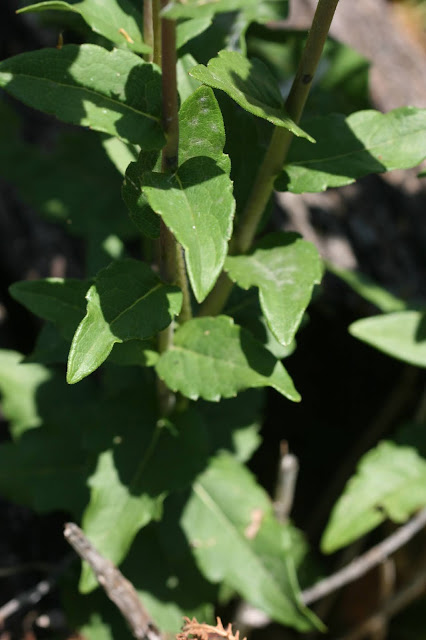The Asteraceae includes some of the very best plants for home landscapes dedicated to providing nectar and pollen for pollinators. This includes the rosinweeds of which starry rosinweed (Silphium asteriscus) is one of two native to Florida. Although the Midwestern prairies of my youth contain a great many species, most disappear as you go south. Kidney-leaf rosinweed (S. asteriscus) only makes it to central Florida in well-drained uplands. Starry rosinweed is found nearly statewide, but naturally only on the west coast, from the top of the Panhandle to Lee County in the south. In this region, it occurs primarily in open, slightly moist habitats.
Rosinweeds are perennials that die back to the ground in winter, though starry rosinweed does this much later in the fall than its close cousin. The basal leaves that emerge in spring are 6-10 inches long, several inches wide and extremely scabrous. Unlike its close cousin, the leaves are elliptical, unlobed and toothed along the leaf margins. Growth occurs quickly in the spring and the stems reach 2-3 feet tall by April. Multiple flower heads occur at the end of these stems and flowering can occur into November. Each compound flower is surrounded by 1-2 dozen bright yellow ray petals and these surround the disk flowers that also are yellow. These, like other "sunflowers", open sequentially over 1-2 weeks. Unlike most asters, the disk flowers do not produce seed. Only the ray petals do.
Rosinweeds attract a great diversity of pollinators and are nearly always being visited by something during the day. Though kidney-leaf rosinweed is quite touchy regarding its growing conditions, starry rosinweed is quite adaptable and can be grown in nearly any condition found in a typical landscape setting. Because of this, it has become one of the most commonly grown native wildflowers in Florida and can be procured at nearly every native plant nursery affiliated with FANN - the Florida Association of Native Nurseries. It will adapt to drier soils than it naturally occurs in, but water it well until fully established if you can't give it seasonably moist conditions. It grows easily from seed, collected when it is brown and dry, and it will regularly self seed in most landscapes.




No comments:
Post a Comment
Please let me know if this site and the various postings have been useful to you.